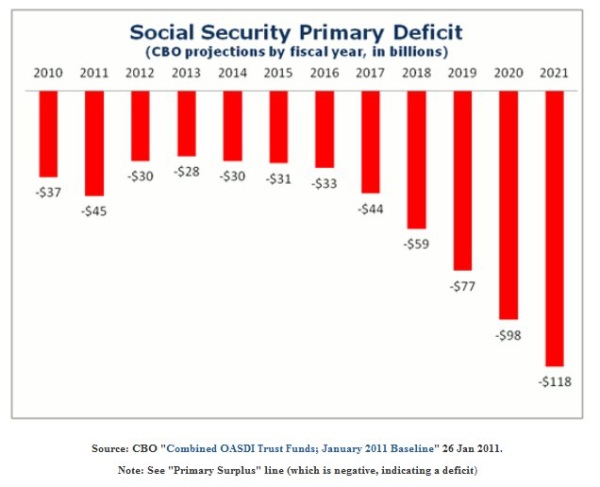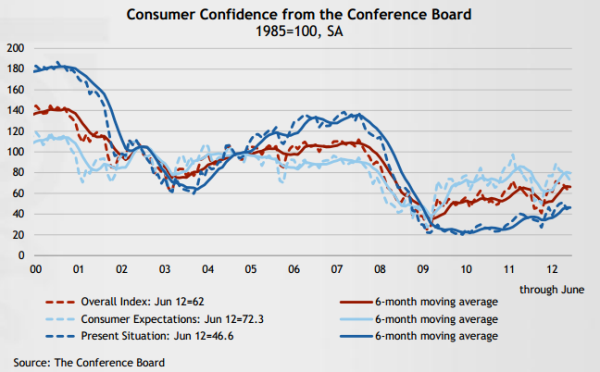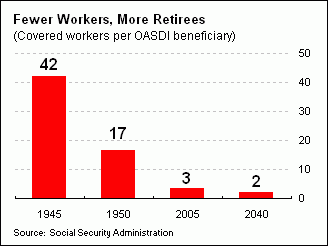---- a larger share of workforce dominated by older Americans
With Social Security, working Americans are taxed for current retirees. This works when you have a large and young work base supporting a relatively small retired population. That equation is not our current situation. In 1960 you had nearly 5 workers for each beneficiary. Today that number is down to 2.8 and will hit 1.9 in 2035. For many young and less affluent Americans this is the time they will enter into retirement. If we are having a hard time funding current programs what is going to change the math down the line?
The infinite deficits
The current system is built on debt financing and spending money we don’t have. We are running deficits much quicker with Social Security than once expected:

This is now simply a reality. The one thing about Social Security however is that money is flowing into the system versus money just flying out to say bailing out the banking sector. The “trust fund” is nothing more than promises to pay people in the future but there is no giant bank account with trillions of dollars waiting to be paid out. For many young Americans struggling with the poor economy, Social Security benefits in the future seem more like a distant dream.
We are now officially three years out of a recession but of course the public does not feel this economic recovery:

The reality is of course most Americans have taken a major haircut to their investment portfolios. While a small part of our economy is protected by bailouts and massive disinformation, the rest are left to contend with a fierce version of market austerity. So it should come as no surprise that household net worth is down, wages are down, and low wage positions dominate the new jobs that do hit the market.
The math behind the deficits in Social Security are no mystery. This is one part of the economy we can predict with certainty:

The trend is unmistakable. We have a smaller pool of workers to support a quickly aging population. Here are some stunning figures:
People 65+ as a share of the working-age populationNot only will young compete against old, there will be a smaller pool of benefits to distribute out. The only thing that can remedy this is if the economy hits a boom cycle and wages and jobs increase. That is not happening and what seems to be the case is we are expanding our debt more and more.
2010: 21%
2035: 36%
Source: A clash of generations – 1 out of 6 Americans receiving Social Security benefits. A larger share of workforce dominated by older Americans.